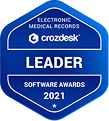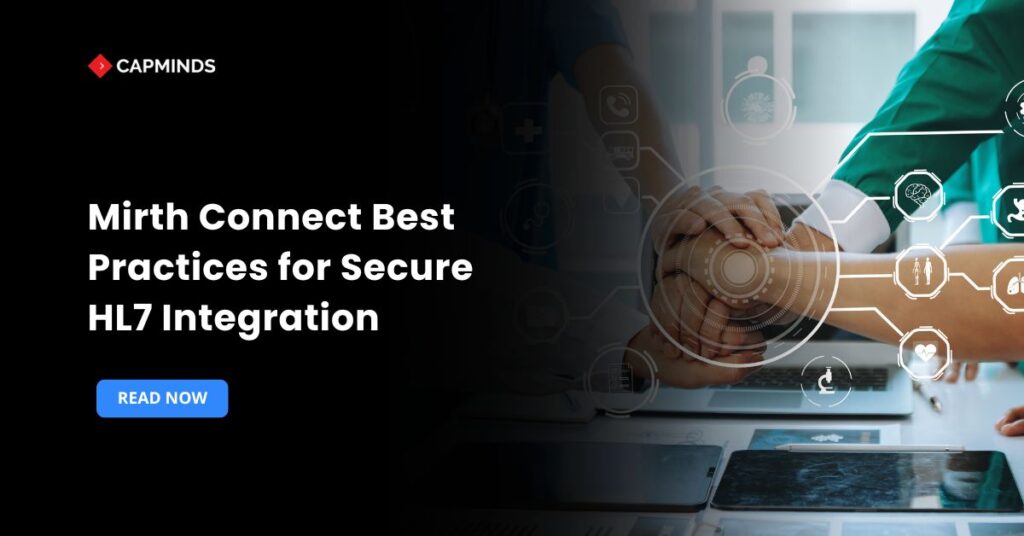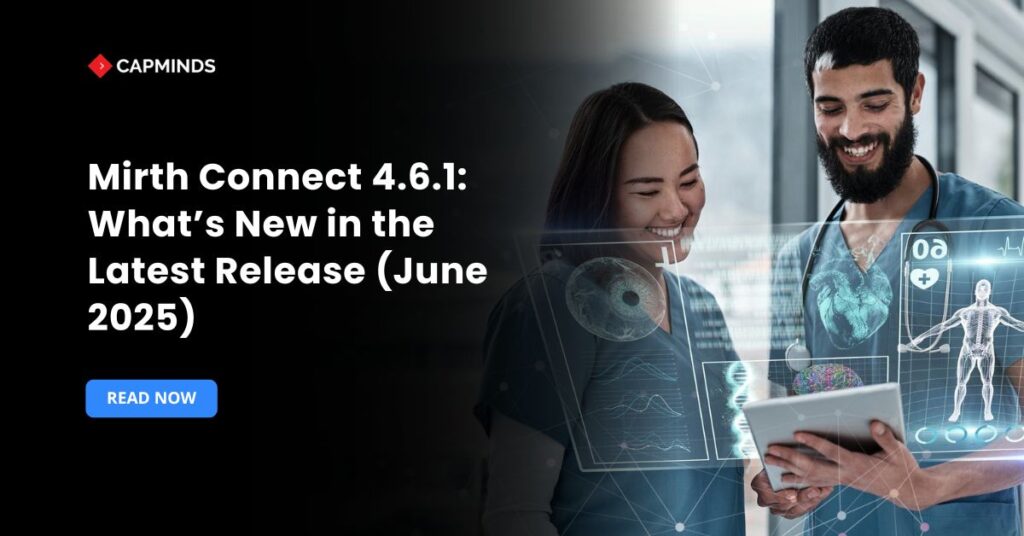Population Health IT Solutions
Next-Gen Population Health Management
Solutions for Value-Based Care
Transform how your organization predicts risks, coordinates care, and engages populations
with CapMinds’ intelligent, FHIR-ready Population Health Management (PHM) platform —
secure, scalable, and built for real outcomes across communities.












































Redefine Care Delivery: From Reactive to Proactive Population Health
Fragmented data, uncoordinated care plans, and delayed interventions result in escalating and missed prevention opportunities. CapMinds population health IT solutions brings together patient information from various sources, allowing population health management tools and care teams to identify risk cohorts and intervene earlier – decreasing burden of chronic disease and enhancing overall health outcomes.
The Result? Better care coordination, healthier populations, and measurable value-based performance for your organization.
How Capminds Can help?
0 %
0 %
0 %
0 %
Integrated Population Health Management Services We Deliver
Data Integration & Interoperability
Most care teams struggle with disconnected systems. CapMinds unites patient, clinical, and payer data into one reliable source through FHIR-based connections and secure pipelines. Our population health interoperability solutions make every data point available in real time — helping providers see the complete picture and act with confidence.
Sub-services:
- Multi-source data unification
- FHIR and HL7-based data exchange
- Patient identity matching (EMPI)
- Real-time data synchronization
Care Coordination & Risk Management
CapMinds streamline the collaboration process so that the providers, case managers and patients remain connected all time. We assist in early identification of at-risk populations, build shared care plans, and reduce unnecessary readmissions. That’s how an integrated care population health solution should work — team-based work, data, and real-time communication to keep patients on track.
Sub-services:
- Chronic care coordination
- Risk and cohort identification
- Alerts and task automation
- Registry and case tracking
Quality & Regulatory Reporting
Tracking quality measures and compliance shouldn’t drain your time. CapMinds automates the entire reporting cycle for CMS, ACO, and FQHC programs — keeping submissions accurate and on schedule. As a trusted population health software vendor, we make compliance a natural part of your daily workflow, not an annual panic.
Sub-services:
- CMS and ACO reporting
- eCQMs and UDS automation
- Quality measure monitoring
- Compliance review support
Analytics & Performance Insights
At CapMinds we help healthcare organizations to understand what drives outcomes, utilization, and costs by using powerful dashboards and visual reports. Our population health analytics solutions provide providers with greater visibility, enabling them to act more quickly and to more accurately measure the results of their initiatives.
Sub-services:
- Cost and utilization analysis
- Outcome measurement
- Performance benchmarking
- Predictive trend monitoring
Patient Engagement & Outreach
CapMinds enables ongoing engagement with timely reminders, educational content, and follow-up prompts — ensuring every patient feels supported between visits. This is how population health software vendors strengthen adherence, satisfaction, and overall care quality.
Sub-services:
- Preventive visit reminders
- Patient education sharing
- Multi-channel communication
- Satisfaction tracking
Scalable Deployment & Support
Every organization grows differently. CapMinds builds flexible, cloud-ready systems that adapt to your needs — from small practices to large networks. Our team stays involved after deployment, fine-tuning your setup and ensuring consistent performance across all programs.
Sub-services:
- Implementation and setup
- Ongoing optimization
- Performance monitoring
- Security and compliance upkeep
Who Do We Serve?
Powerful Features Of Population Health Software
Unified FHIR-Native Data Integration
CapMinds connects data from EHRs, labs, payers, and devices into one clean, real-time view. No silos. No manual merges — just a single source of truth for every patient journey.
Predictive Risk Insights That Drive Action
Our predictive analytics population health models highlight previously undetected care gaps, enabling providers to prioritize those patients that require the most attention.
Compliance-Built Security Layer
Every feature is designed with protection in mind — built on HIPAA, SOC 2, and TEFCA standards. You can deliver connected care with full confidence in data privacy and trust.
Smart Dashboards for Smarter Decisions
Gain definitive insight into outcomes, costs and use across all of your sites. CapMinds dashboards provide visuals of complex analytics and serve as daily decision guides.
Automated Reporting, Zero Guesswork
Cut down on manual spreadsheets. CapMinds automates ACO, CMS, and FQHC reporting — ensuring accuracy, saving time, and meeting every compliance requirement effortlessly.
Cloud Architecture That Grows With You
From small practices to multi-network health systems, our platform scales without slowing down — secure, flexible, and ready for tomorrow’s population health needs.
Cloud Architecture That Grows With You
From small practices to multi-network health systems, our platform scales without slowing down — secure, flexible, and ready for tomorrow’s population health needs.
Why Choose CapMinds Population Health Management Platform
Integration Capabilities
- Major EHRs: Epic, Cerner, Allscripts, OpenEMR, Vozo, NextGen
- Data standards: HL7 v2/v3, FHIR R4, CCD, SMART-on-FHIR
- Platforms: AWS HealthLake, Azure Health Data Services
| Metric | Before CapMinds | After CapMinds | Result |
|---|---|---|---|
| Data aggregation time | 48 hrs | 3 hrs | 94% faster |
| Readmission rate | 18% | 11% | ↓ 39% |
| Quality reporting | Manual | Automated | 100% accuracy |
| Patient engagement | 55% | 82% | +27% growth |
Case Study
Title – ACO Boosts Care Gap Closure by 33% with CapMinds PHM
Challenge – Disparate EHR systems and manual reporting slowed down care coordination and performance tracking.
Solution – CapMinds deployed a unified, FHIR-ready PHM platform integrating patient data, risk analytics, and automated reporting.
Results – CapMinds PHM platform transformed disconnected data into measurable care improvements.

What Makes Us a Trusted Population Health Management Company
CapMinds is globally recognized for excellence in Healthcare IT security, regulatory compliance, responsive support, and service quality. Trusted by leading healthcare organizations, we uphold the highest standards to safeguard patient data, ensure uninterrupted operations & deliver solutions you can rely on.







What Our Clients Say
Hear from healthcare leaders who’ve transformed their operations with our service & solution.
Ready to Transform Community Health Outcomes?
Unify your data, optimize performance, and drive measurable value with CapMinds Population Health Management Services.
Book your complimentary PHM consultation today and build a healthier tomorrow.
- Predictive Risk Stratification
- 100% HIPAA & TEFCA Compliance
- Automated Quality Reporting
- Real-Time, FHIR-Based Analytics
FAQ
What exactly are population health management services?
Population health management (PHM) services combine clinical, financial, and social data to improve outcomes across entire patient groups. They identify risk factors, coordinate care, and track performance using analytics dashboards. Many modern PHM platforms integrate robotic process automation (RPA) to reduce manual data entry and streamline reporting, helping healthcare organizations deliver proactive, value-based care rather than reactive, episodic treatment.
How do hospitals use population health management services?
Hospitals use PHM services to unify patient data from EHRs, labs, and claims into one secure view. This enables care teams to:
- Stratify high-risk patients
- Automate preventive-care reminders
- Track outcomes across service lines
Many hospitals add robotic process automation to handle data validation, quality reporting, and registry submissions—boosting efficiency and compliance with minimal manual effort.
Can I customize population health management solutions for my clinic?
Yes. Most PHM platforms allow configurable dashboards, tailored analytics, and specialty-specific metrics. Clinics can set population segments, define care protocols, and automate tasks through integrated RPA modules. A trusted implementation partner can align these customizations with your existing workflows and compliance goals, ensuring smooth adoption without disrupting day-to-day operations.
Can population health software integrate with my current EHR?
Yes. Modern PHM software is built on interoperability standards such as HL7 and FHIR. It connects seamlessly with most EHRs, billing systems, and analytics tools. Some organizations use robotic process automation to bridge legacy systems, synchronize records, and ensure consistent data exchange—creating a unified, real-time patient view without expensive replacements.
How do I pick the right population health software for my hospital?
Focus on these essentials:
- EHR and lab integration (HL7/FHIR support)
- Customizable analytics and dashboards
- Data security and regulatory compliance
- Scalable automation features such as RPA workflows
Choosing a partner experienced in digital health transformation ensures your PHM platform aligns with both operational and value-based-care goals.
What are integrated care population health solutions?
Integrated care PHM solutions connect primary care, specialty, behavioral, and community health providers through shared data and coordinated workflows. They break down silos, enabling continuous care across the patient journey. With robotic process automation managing referrals, authorizations, and reporting, these solutions promote collaboration, reduce delays, and enhance care continuity.
Are population health management services worth the cost?
Yes. PHM services reduce preventable hospitalizations, improve chronic-care follow-ups, and strengthen quality-measure compliance—all of which lower overall costs. Automated data workflows powered by RPA services minimize administrative overhead and human errors. Over time, these efficiencies yield measurable ROI through improved reimbursements, optimized staffing, and better health outcomes across diverse populations.
Can small clinics benefit from population health services?
Absolutely. Small and mid-sized clinics gain real-time visibility into patient health trends without heavy infrastructure. Cloud-based PHM tools automate reporting, monitor chronic conditions, and support shared-care plans. When paired with RPA-driven workflows, clinics can manage care gaps, improve follow-ups, and maintain compliance using fewer resources—making population-level insights affordable and practical.
How does population health software work in real life?
In practice, PHM software aggregates patient data from EHRs, labs, and remote devices into a single dashboard. It flags high-risk individuals, supports outreach campaigns, and tracks progress against quality measures. Many systems include RPA capabilities that auto-update registries and generate reports—saving clinical teams time while keeping data accurate and actionable.
Are cloud-based population health tools safe to use?
Cloud-based PHM platforms are secure when designed with HIPAA-compliant encryption, role-based access, and continuous monitoring. Reputable vendors host data on SOC 2-certified servers with automated backups and audit trails. RPA services further enhance safety by reducing manual data handling, minimizing human error, and maintaining consistent compliance with privacy regulations.
Are population health analytics tools easy to use for doctors?
Yes, modern analytics tools feature intuitive dashboards, visual reports, and automated alerts that simplify decision-making. Physicians can view real-time trends, monitor care gaps, and quickly act on insights. Behind the scenes, RPA handles repetitive data collection and updates, letting clinicians focus on patient outcomes rather than administrative tasks.
Can population health management tools track outcomes for large patient groups?
Definitely. PHM platforms are designed to analyze massive data sets from multiple sources. They segment populations by risk, monitor interventions, and measure outcomes against benchmarks. RPA services automate data collection and validation, ensuring every metric—from readmission rates to preventive-care compliance—is accurate, timely, and ready for actionable insight.
CapMinds Resources
Take a look at our latest blogs.
Integrated HealthTech Services
Combine Mirth Connect with our full-stack digital health solutions:
EHR/EMR Integration
Connect your EHR or EMR system seamlessly with health systems, labs.
Explore More →

